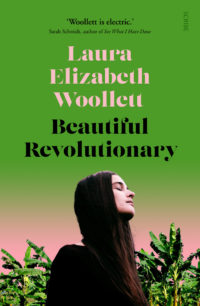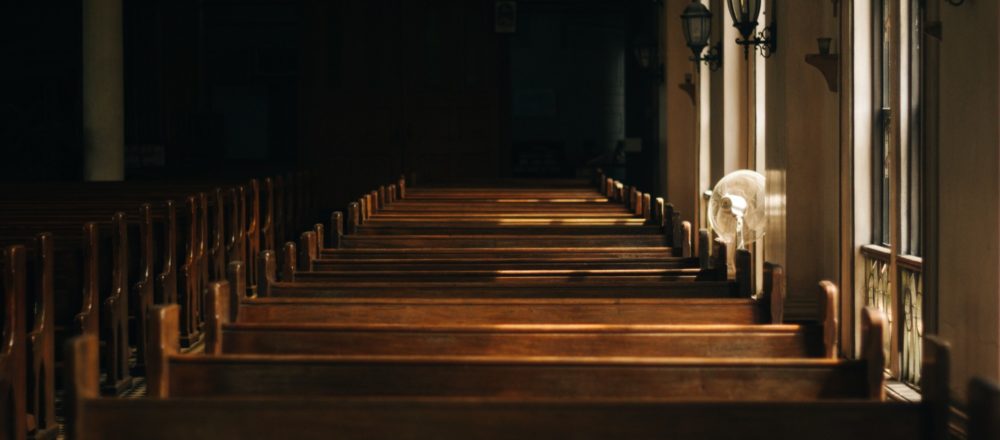
Beautiful Revolutionary
Laura Elizabeth Woollett
Scribe Publications
Raised in a family which, while not perfect, was free from religious indoctrination, I am curious about the social and cultural conditions which engender religious devotion. Does early indoctrination create dependency; a neural pathway attuned to fantasy, hierarchy and ritual? Is there a correlation between exposure to religion during development and transference to a different faith as an adult? Are some people more susceptible to joining a cult than others?
In popular culture, the Peoples Temple cult is linked with its narcissistic sociopathic leader, Jim Jones, and the 1978 massacre and suicide where over 900 adults and children were killed; and the trivialising phrase, “to drink the Kool Aid”. In the 40 years since, more than enough content, in the form of documentaries, books and transcripts, has been dedicated to understanding the how and why of Jim Jones. Laura Elizabeth Woollett’s Beautiful Revolutionary expertly repositions the narrative lens to focus on the members of Peoples Temple and not their leader.
With detail borne of research, Beautiful Revolutionary interweaves the motivations and vulnerabilities of ordinary people drawn to a religious group which espoused ideals of social and racial equality, feminism, inclusion and strong community. Woollett reaches into the past to recreate the social and political landscape of North America amidst reform and protest. The result is a work which builds empathy with the diverse folk who saw something valuable in the Peoples Temple.
Told in three parts, the linear narrative unfolds at a pace which reveals the creeping changes in rhetoric and circumstances which Peoples Temple members experienced over time. Lenny and Evelyn’s story – Book One – is imbued with an authority reminiscent of Patti Smith’s, Just Kids, an autobiographical work set in the 1960s and 1970s. Both stories reflect an energetic optimism which seems to belong to an irretrievable past. Woollett’s skill is in reimagining the political and social mood of a counter-culture in North America she didn’t experience first-hand.
The Peoples Temple promoted Socialist values which held appeal across age groups and social and cultural backgrounds. Woollett acknowledges the limitations of Beautiful Revolutionary’s exploration of race – especially since two-thirds of the congregation was represented by African-American folk – and highlights that the central characters belong to the predominantly white Peoples Temple leadership group. By Book Two, character observations which contradict the official messaging begin to appear. Some of the most insightful (and chilling) comments come from Jones’ sons who have witnessed his hypocritical behaviour up close.
Confusing and contradictory logic precedes Jones’ steadily escalating patterns of abuse and mental and physical decline. The experiences of cult members in Beautiful Revolutionary seem to conform to patterns of behaviour common to abusive intimate relationships, as well as cults (also known as new religious movements depending on perspective and defining logic). Woollett’s reconstruction of an unhealthy and controlling relationship’s ‘honeymoon phase’ takes the reader through the excitement and idealisation felt by new Peoples Temple recruits, as well as the descent into sexual, physical, psychological, social and financial abuse.
Beautiful Revolutionary details scenes which also draw parallels with torture techniques – isolation, sleep deprivation, restricted food, public humiliation (‘struggle sessions’), fabricated realities, punishment and reward – consistent with studies of 1950s practices in Communist China. Of the eight key aspects of ‘thought reform’ or ‘ideological remolding’ evident in Chinese prisons, we witness Jones using most of these techniques on his followers. As Jones’ power goes unchecked – despite an escalation in erratic behavior and irrational thinking – his followers are pushed to endure increasing physical and mental hardship. Lenny’s character can be seen as a device which symbolises a complete breakdown of the self in this hostile environment.
It comes as no surprise when Woollett’s narrative reveals the extent of Jones’s abuse of his position of power and trust to sexually assault adults and children. Woollett demonstrates how Jones was enabled by an inner circle, a familiar facet in cases of institutional abuse in hierarchical power structures regardless of the scale. Beautiful Revolutionary articulates the pressures which made it difficult or dangerous for people to speak truth to power in the context of Jonestown, and more broadly, for anyone part of a social or cultural network trying to speak out.
It would be difficult to approach Beautiful Revolutionary without prior knowledge of the Jonestown massacre and suicide, but knowing the real-world background story does not prevent investment in Woollett’s characters and their circumstances. The early warning signs planted throughout the pages of Beautiful Revolutionary serve to heighten the sense of impending danger and remind us that in the book, as in life, those clues are always easier to spot in retrospect.


